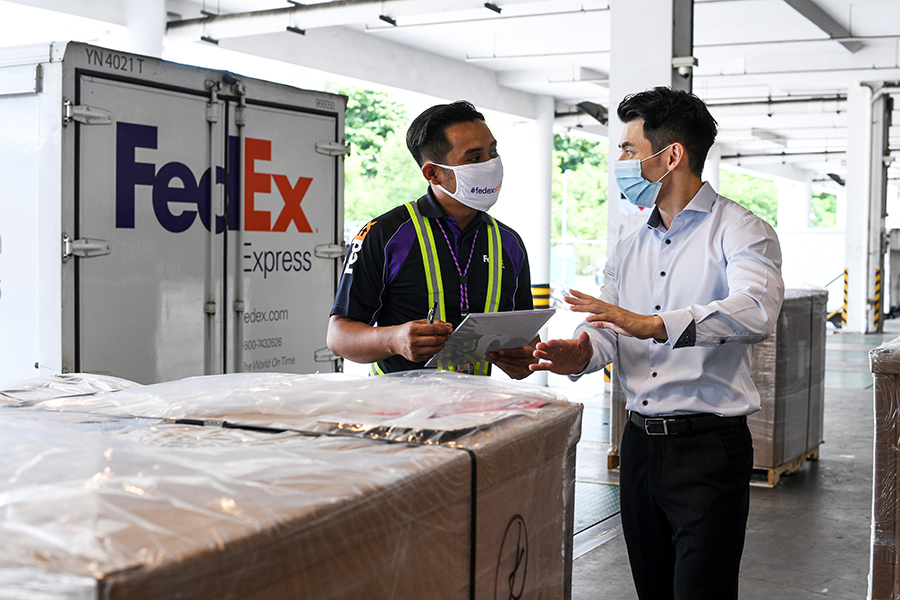It’s Time For SMEs To Take Advantage Of Trade Deals
Small businesses are missing out on big opportunities. There’s a critical knowledge gap around how SMEs capitalize on the latest trade deals in Asia Pacific – it’s time to fill it.
Innovation for all is the idea that innovation, in its fullest expression, should serve everyone.
Across Asia, entrepreneurial innovators are leading with passion and counting on connectivity to expand their businesses across borders, seize niche opportunities and shape our global economic future. Never before have Asian small businesses and start-ups been so connected – in digital tools, technology, access and ideas.
Across Asia, entrepreneurial innovators are leading with passion and counting on connectivity to expand their businesses across borders, seize niche opportunities and shape our global economic future. Never before have Asian small businesses and start-ups been so connected – in digital tools, technology, access and ideas.

But some SMEs are failing to access trade deals – a significant tool for business growth and opportunity. Consider agreements like the Comprehensive and Progressive Trans-Pacific Partnership (CPTPP), Regional Comprehensive Economic Partnership (RCEP) or the Japan-EU Economic Partnership Agreement (EPA) – what do they offer to SMEs?
Many SMEs are unaware of potential benefits
Trade agreements are designed to lower the barriers between participating countries, giving domestic companies better access to more customers and larger, international markets. They aim to reduce tariffs and customs duties which hinder global commerce.
According to Nikkei Asia, the RCEP is arguably one of the most important trade deals in recent years – facilitating trade of 30% of the world’s population and creating the world’s largest trade bloc in history.
The agreement, which was signed by 15 countries across the APAC region in November 2020, will eliminate about 90% of tariffs on imports between its signatories within 20 years of coming into force. Having already encompassed major regional powerhouse economies such as China, Australia and Japan, the RCEP is an ambitious initiative that will greatly impact the region’s trade in the coming years.
Before this, the CPTPP agreement, which went into effect in December 2018, created a trade community accounting for an extraordinary 14% of the global economy. That figure is projected to rise to 18% as more countries queue up to join the bloc – already comprising some of Asia’s most dynamic economies including Vietnam, New Zealand, Japan and Singapore.
Then there’s the Japan-EU EPA – another new deal that’s expected to spark more than a 30% rise in the volume of trade and went into force in February 2019.
Many SMEs and entrepreneurs don’t know about these deals – let alone how to translate their potential into business success. At FedEx, we’ve become accustomed to helping guide our SME customers in how to use trade agreements to their benefit.
According to Nikkei Asia, the RCEP is arguably one of the most important trade deals in recent years – facilitating trade of 30% of the world’s population and creating the world’s largest trade bloc in history.
The agreement, which was signed by 15 countries across the APAC region in November 2020, will eliminate about 90% of tariffs on imports between its signatories within 20 years of coming into force. Having already encompassed major regional powerhouse economies such as China, Australia and Japan, the RCEP is an ambitious initiative that will greatly impact the region’s trade in the coming years.
Before this, the CPTPP agreement, which went into effect in December 2018, created a trade community accounting for an extraordinary 14% of the global economy. That figure is projected to rise to 18% as more countries queue up to join the bloc – already comprising some of Asia’s most dynamic economies including Vietnam, New Zealand, Japan and Singapore.
Then there’s the Japan-EU EPA – another new deal that’s expected to spark more than a 30% rise in the volume of trade and went into force in February 2019.
Many SMEs and entrepreneurs don’t know about these deals – let alone how to translate their potential into business success. At FedEx, we’ve become accustomed to helping guide our SME customers in how to use trade agreements to their benefit.

The knowledge gap
In markets like Singapore, there’s broad recognition that SMEs are having difficulties reaping the benefits. In Australia, concerns that SMEs are not seizing the opportunity triggered a government inquiry. Further afield in Europe, research indicates that lack of information or regulatory complexity is resulting in billions of euros paid every year by companies in undue customs duties.
Many SMEs tell us that agreements remain too tough to interpret or navigate, especially for those inexperienced in international trade.
Many SMEs tell us that agreements remain too tough to interpret or navigate, especially for those inexperienced in international trade.
A simple explainer
So what’s the answer? It starts with making trade deals a part of business strategy from the start. Companies that use agreements experience stronger export growth, access to new markets, a wider client base and the better business opportunities. Such developments can be transformative for small business growth.
But the challenge is also more specific. SMEs often lack the resources and expertise to navigate complex trade rules. To reap the benefits of trade agreements, manuals or “explainers” are needed to guide them through specific benefits within the labyrinth of information that exists on any one deal.
But the challenge is also more specific. SMEs often lack the resources and expertise to navigate complex trade rules. To reap the benefits of trade agreements, manuals or “explainers” are needed to guide them through specific benefits within the labyrinth of information that exists on any one deal.

Other than lowering tariffs for almost all goods traded between member companies, the CPTPP also makes moving goods among member states easier by streamlining paperwork, increasing transparency, and setting up rules that reflect modern supply chains. That means SMEs will be able to trade in 11 CPTPP markets with up to 95% tariffs eliminated while being greatly facilitated by new policies aimed at empowering their participation in international markets. This greatly simplifies their access to markets representing almost 500 million people.
When it comes to the Japan-EU EPA – the largest trade community in history – the vast majority of the 1 billion euros in duties paid annually by EU companies exporting to Japan have now gone. This has opened up a market of 127 million consumers – with benefits for businesses from both sides.
When it comes to the Japan-EU EPA – the largest trade community in history – the vast majority of the 1 billion euros in duties paid annually by EU companies exporting to Japan have now gone. This has opened up a market of 127 million consumers – with benefits for businesses from both sides.
So where to from here?
The choices are many – and growing. For instance, SMEs in different CPTPP markets can team up to target a third, and entirely different market – saving time and money by pooling resources. SMEs should make full use of business, government and SME bodies – as well as work alongside companies like FedEx to understand where the quick wins for their business may lie.
It’s also counsel and technology tools that are critical. For instance, we help SMEs with knowledge and resources to help them clear customs confidently and quickly. We advocate automating as many shipping processes as possible, so cross-border shipments clear customs easily. Here, tools like FedEx Global Trade Manager – which helps SMEs estimate duties and taxes, or helps find the necessary documents are seeing strong uptake.
It’s also counsel and technology tools that are critical. For instance, we help SMEs with knowledge and resources to help them clear customs confidently and quickly. We advocate automating as many shipping processes as possible, so cross-border shipments clear customs easily. Here, tools like FedEx Global Trade Manager – which helps SMEs estimate duties and taxes, or helps find the necessary documents are seeing strong uptake.

Then there’s our work with customs authorities across the region to expand clearance solutions for cross-border e-commerce. In China, we recently launched a “one stop” Business to Consumer (B2C) import customs clearance solution for e-retailers.
No matter what, the goal is clear – ensure innovation flows from all deals to all kinds of businesses. If SMES can put the benefits into practice, the possibilities are endless.
Want to keep up to date on the latest business tools and trends? Follow us on LinkedIn and bookmark our small business page for the freshest content and insights.
No matter what, the goal is clear – ensure innovation flows from all deals to all kinds of businesses. If SMES can put the benefits into practice, the possibilities are endless.
Want to keep up to date on the latest business tools and trends? Follow us on LinkedIn and bookmark our small business page for the freshest content and insights.
***





















 The Latest
The Latest